The Transfiguration in Stained Glass
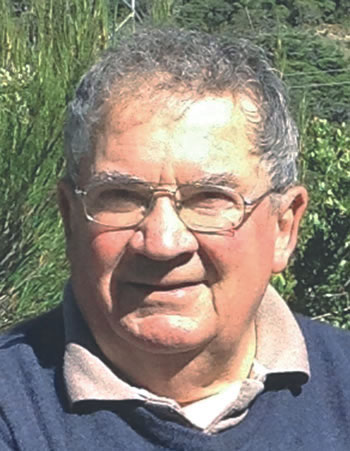
Glen McCullough
The Transfiguration of the Lord is the feast on Sunday, 6th August. No doubt the story is familiar to you as you will have heard the Gospel read every year at about this time.
The event is described in Matthew, Mark and Luke’s Gospels, reflecting it’s significance. In all three accounts there was a sequence of the disciples acknowledging Jesus as the Messiah, and Jesus telling them he was to suffer and die.
Then Jesus went up the mountain with Peter, James and John and was revealed in all His glory, with Moses and Elijah in attendance. In a voice from above, God the Father acknowledged Jesus as His beloved Son. The disciples were awestruck until Jesus returned to normal human form and reassured them.
This window from St Mary of the Angels, Wellington [1] shows the scene - Jesus, Moses with the stone tablets at the left, Elijah at the right, with terrified and confused disciples below. Everything is there, except that Jesus looks as He normally would.
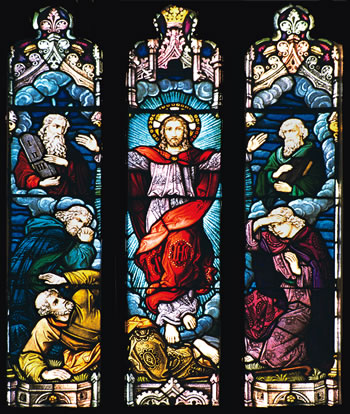
1
Which raises the question: how to show in stained glass His face “shining like the sun” and his clothes “dazzling as light”? Compare some of the artistic attempts that follow to see how it might be done.
I have photographed fourteen windows showing the event. The one above from Old St Paul’s, Wellington [2] shows just Jesus, Moses and Elijah 2
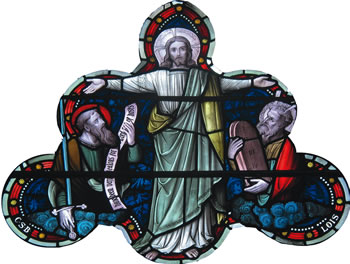
The three windows below are representative. Of the two more traditional ones [3] is in St George’s in the Pines, Banff, Canada and [4] is in St Benedict’s, Broadway, Sydney. Note that in [3] Moses and Elijah are standing equal with Jesus, whereas in [4] they are subserviant.
[5] is in St Barnabas, Roseneath, Wellington and is more modern, and shows only the disciples. In all three the disciples are shown as awestruck and crouching , as if fearing the worst. They had been taught from childhood that they couldn’t look on the face of God and live.


4

5
By far the most beautiful I have seen is in Holy Sepulchre church, Grafton, Auckland [6]. It is also completely traditional.
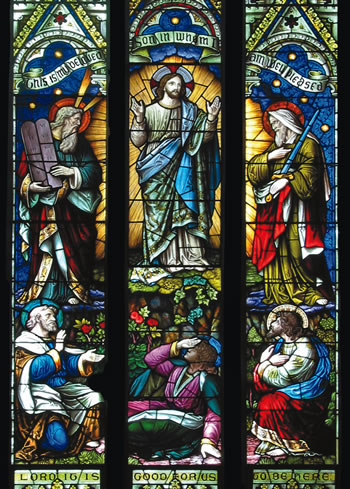
6
All these windows show Jesus in subtly different ways. And that raises a question - how do I see Jesus? I have a relationship with Jesus, and when I picture Him in my mind I see him in human form, and I am comfortable with that. Too comfortable, perhaps! Should I be seeing him as translucent, like the image over the page?
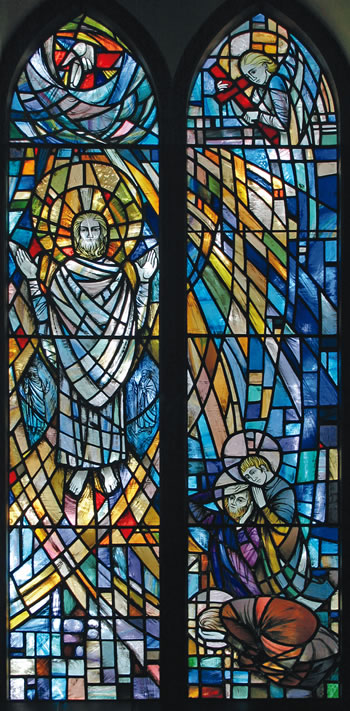
7
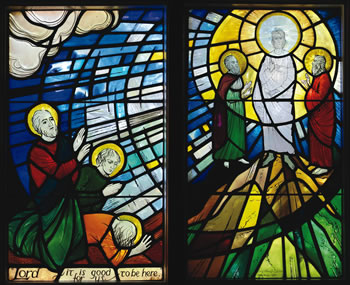
8
The two windows on this page were designed by my friend Beverley Shore Bennett. [7] is in St Michael’s, Kelburn, Wellington, and [8] is in St John’s, Trentham, Wellington. Apart from being made by two different makers, they are strikingly different. In [7], Jesus looks suspended in mid-air but is otherwise similar to the preceding portrayals. [8] is completely different. When I asked her why Jesus was so indistinct, she told me it was the only way she could depict His face “shining like the sun” and His clothes “dazzling as light” as described in the Gospel passages. Because of her desire to be faithful to Scripture, [8] is possibly the only window in the collection that attempts to show the full glory of God the Son.
That was how she saw Jesus transfigured. How do you see Him?
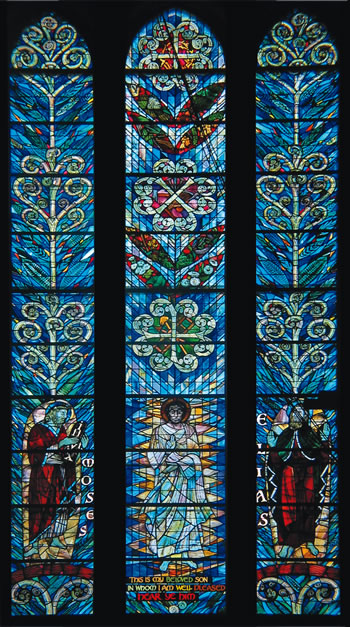
9
Finally, to give the Transfiguration a New Zealand flavour, look no further than this window that is in the earthquake- damaged Christ Church Cathedral [9]. The abundance of koru and other Māori symbolism in the design, together with the undoubted Maori face of Jesus [10] made it unique.
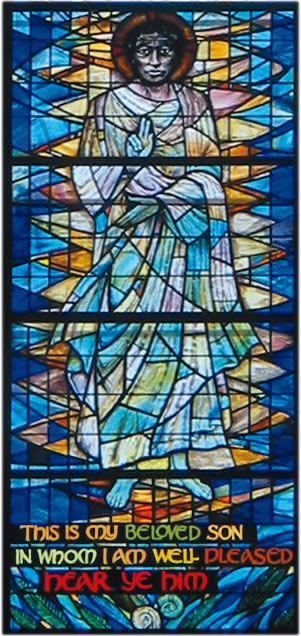
10
These windows show how many artists saw Jesus transfigured.
Which brings me back to my question: how do you see Jesus?
 Entries(RSS)
Entries(RSS)